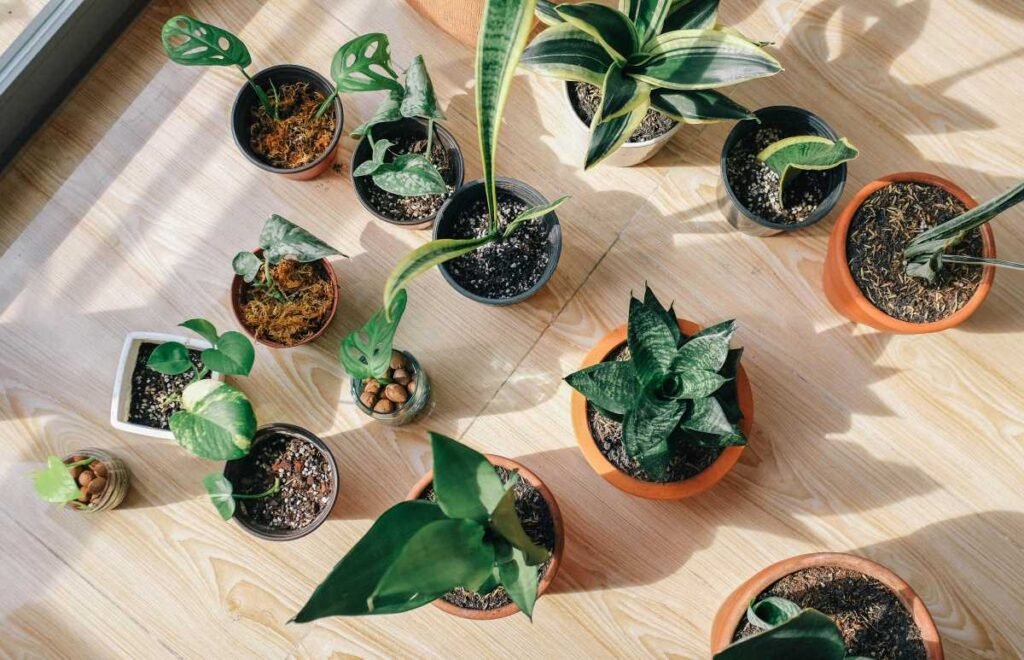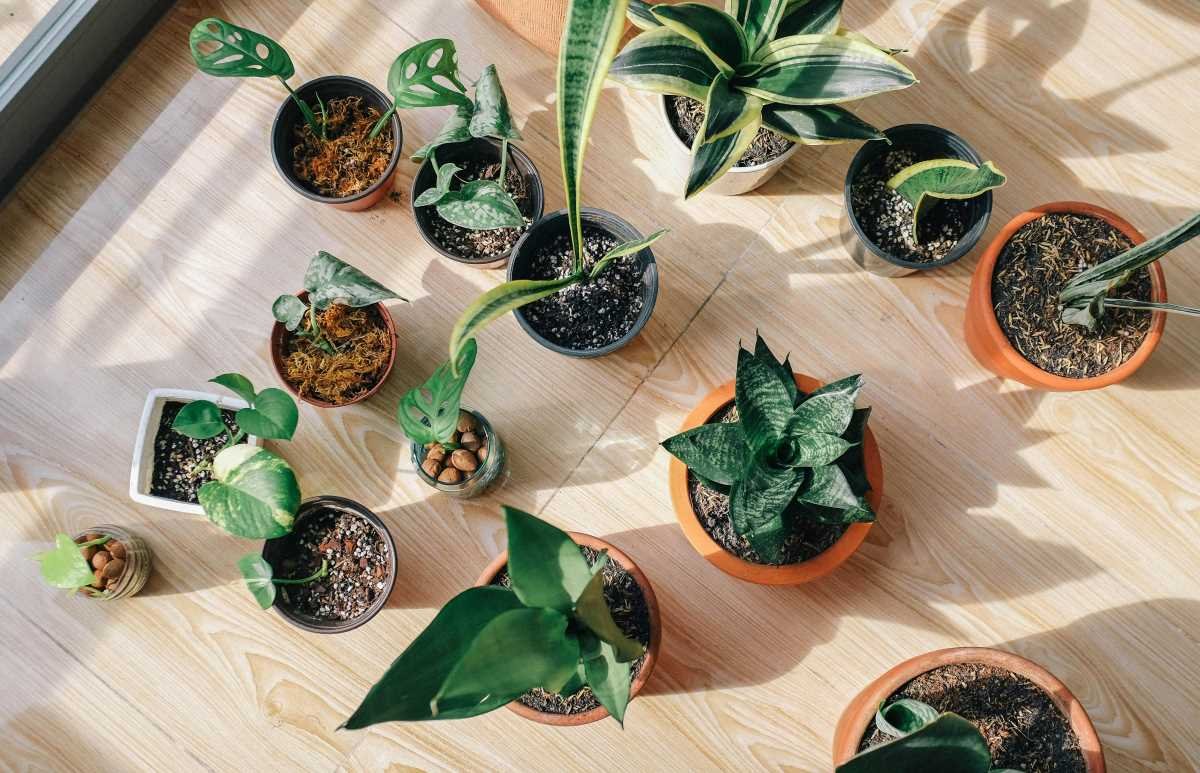Snake plants, also known as Sansevieria or Dracaena trifasciata, are one of the most popular houseplants for indoor enthusiasts and plant lovers. These resilient, low-maintenance plants are recognized not only for their air-purifying qualities but also for their striking appearance.
The snake plant’s sharp, upright leaves are reminiscent of snakeskin, giving it its common name. These plants are incredibly versatile, making them an ideal choice for both beginners and seasoned gardeners alike.
In this in-depth guide, we will explore the different varieties of snake plants, their unique features, how to care for them, and the benefits of adding them to your home. By the end of this post, you’ll have a comprehensive understanding of snake plants and why they’ve become a household staple.

Table of Contents
Introduction to Snake Plants
Snake plants are native to West Africa and have earned their reputation as being nearly indestructible. They can thrive in various light conditions, from low to bright indirect light, and can tolerate neglect. This makes them perfect for individuals who may not have the time or experience to care for more demanding plants.
The plant is known for its long, upright leaves that are often green with bands or streaks of yellow, silver, or white, depending on the variety. Snake plants belong to the Asparagaceae family and have gone through several taxonomic revisions, but they are commonly referred to by their former genus name, Sansevieria.
Benefits of Snake Plants

1. Air Purification
One of the standout benefits of snake plants is their ability to purify indoor air. They are known to remove toxins such as formaldehyde, benzene, and trichloroethylene from the air.
The snake plant is unique because it continues to release oxygen at night, unlike most plants that only release oxygen during the day. This makes it an excellent addition to bedrooms, helping improve sleep quality by enhancing air quality.
2. Low Maintenance
Snake plants are incredibly hardy and require minimal attention. They can tolerate drought, and their thick leaves store water, allowing them to survive extended periods without watering. Additionally, they are pest-resistant and adapt well to most environments.
3. Aesthetic Appeal
Snake plants’ architectural form, with their tall, upright leaves, makes them a great addition to any room. They offer a modern, sleek look and can complement a variety of interior design styles, from minimalist to bohemian.
Top 8 Beautiful Snake Plant Varieties
Snake plants come in a variety of shapes, sizes, and colors, making them suitable for different spaces and personal preferences. Below, we will explore some of the most popular and distinctive varieties.
1. Sansevieria Trifasciata ‘Laurentii’
The Sansevieria Trifasciata ‘Laurentii’ is one of the most popular and recognizable varieties of snake plants. It features long, upright green leaves with a striking yellow edge. The dark green horizontal stripes running through the leaves give it a distinctive appearance.
- Leaf Pattern: Vertical green leaves with yellow margins
- Height: Can grow up to 2–4 feet tall
- Light: Prefers bright, indirect light but can tolerate low light conditions
- Watering: Allow the soil to dry out completely between waterings
This variety is perfect for adding a pop of color to any room while maintaining a sleek and modern look.
2. Sansevieria Trifasciata ‘Zeylanica’
The Sansevieria Trifasciata ‘Zeylanica’ is a classic variety known for its dark green leaves with subtle, wavy gray-green horizontal stripes. It is often mistaken for the Laurentii variety, but the absence of the yellow border sets it apart.
- Leaf Pattern: Wavy horizontal stripes in dark and light green
- Height: Typically grows between 1–3 feet tall
- Light: Thrives in medium to low light conditions
- Watering: Drought-tolerant, requires watering only when the soil is dry
This variety is ideal for those seeking a more subtle, monochromatic look.
3. Sansevieria Trifasciata ‘Moonshine’
The Sansevieria Trifasciata ‘Moonshine’ stands out with its silvery-green leaves that are broader and lighter than most other varieties. The leaves have a unique sheen to them, giving this variety a ghostly, ethereal appearance.
- Leaf Pattern: Smooth, silvery-green with faint horizontal stripes
- Height: Can grow up to 2 feet tall
- Light: Prefers bright, indirect light to maintain its pale color
- Watering: Water sparingly; let the soil dry out between waterings
The Moonshine variety is a perfect choice for those looking for an elegant and striking plant.
4. Sansevieria Trifasciata ‘Twist’
As its name suggests, the Sansevieria Trifasciata ‘Twist’ features leaves that twist and curl as they grow, unlike the upright leaves of most snake plants. The leaves have a yellow margin and green horizontal stripes similar to the Laurentii variety.
- Leaf Pattern: Twisting leaves with yellow margins and green stripes
- Height: Generally grows up to 1–2 feet tall
- Light: Adapts well to both low and bright indirect light
- Watering: Requires minimal watering, only when the soil is completely dry
This variety adds a unique and playful texture to any space, making it a great conversation piece.
5. Sansevieria Cylindrica
The Sansevieria Cylindrica, also known as the African Spear Plant, features cylindrical, tube-like leaves that grow upright. Unlike other varieties, the leaves of this plant are round and can reach impressive heights, making it a great statement piece.
- Leaf Pattern: Cylindrical, tubular leaves that grow upright
- Height: Can grow up to 3 feet tall
- Light: Prefers bright, indirect light but can tolerate low light
- Watering: Requires watering only when the soil is dry
Its architectural form makes it a favorite for modern and minimalist decor.
6. Sansevieria Masoniana ‘Whale Fin’
The Sansevieria Masoniana, commonly known as the Whale Fin snake plant, is a bold and striking variety. It features broad, paddle-shaped leaves that can grow quite large, resembling a whale’s fin. This variety is slower-growing, but it’s well worth the wait.
- Leaf Pattern: Broad, paddle-shaped leaves with dark green patterns
- Height: Can grow up to 4 feet tall
- Light: Thrives in bright, indirect light
- Watering: Water when the soil is completely dry
This variety is perfect for those looking for a statement plant that can stand alone in any room.
7. Sansevieria Ehrenbergii
The Sansevieria Ehrenbergii, also known as Blue Sansevieria, is a unique variety that features thick, blue-green leaves arranged in a fan-like formation. The leaves are smooth and have a pointed tip, giving it an exotic and distinctive look.
- Leaf Pattern: Thick, smooth leaves with a bluish tint
- Height: Can grow up to 3 feet tall
- Light: Prefers bright, indirect light but tolerates low light
- Watering: Water sparingly; allow the soil to dry out between waterings
This variety adds a touch of uniqueness and texture to any space.
8. Sansevieria Kirkii
The Sansevieria Kirkii is another beautiful variety, known for its star-shaped rosette formation and patterned leaves. It has dark green leaves with lighter green and white speckles, giving it a textured and eye-catching appearance.
- Leaf Pattern: Speckled with light green and white spots
- Height: Can grow up to 1–2 feet tall
- Light: Prefers bright, indirect light but can adapt to lower light conditions
- Watering: Requires minimal watering; let the soil dry out between waterings
This variety is perfect for those who want a plant with an interesting texture and a compact growth habit.
Snake Plant Care Guide
1. Light Requirements
Snake plants are incredibly adaptable when it comes to light. While they prefer bright, indirect light, they can also thrive in low-light conditions, making them perfect for indoor spaces with limited natural light. However, exposing them to more light will encourage faster growth and more vibrant colors, especially in varieties like the Laurentii or Moonshine.
2. Watering
One of the snake plant’s biggest advantages is its ability to survive with little water. The plant’s thick, fleshy leaves store water, so it can tolerate drought. It’s crucial to let the soil dry out completely between waterings, as overwatering can lead to root rot. During the winter months, the plant’s growth slows, so you may need to reduce watering to once every 3–4 weeks.
3. Soil and Potting
Snake plants prefer well-draining soil, such as a cactus or succulent mix, to prevent water from sitting in the pot and causing root rot. When potting your snake plant, ensure the pot has drainage holes. Terracotta pots are a good option, as they allow excess moisture to evaporate, keeping the soil dry.
4. Temperature and Humidity
Snake plants prefer warmer temperatures and can thrive in environments ranging from 60°F to 85°F (16°C to 29°C). They do not tolerate frost or cold drafts, so it’s essential to keep them away from windows or doors during colder months. They are also quite tolerant of low humidity, making them suitable for most indoor environments.
5. Fertilization
Snake plants do not require heavy feeding, but you can encourage growth by fertilizing them during the growing season (spring and summer). Use a balanced, water-soluble fertilizer every 4–6 weeks. Avoid fertilizing during the winter months when the plant is dormant.
6. Propagation
Snake plants are easy to propagate, making them a great plant to share with friends and family. You can propagate them through leaf cuttings, division, or even by separating offsets (baby plants that grow from the base of the mother plant). Each method is simple and requires minimal effort.
Snake Plants and Air Purification
Snake plants are often included in lists of air-purifying plants, and for good reason. In a famous NASA study, snake plants were found to remove toxins such as formaldehyde, benzene, xylene, and trichloroethylene from the air. These pollutants are commonly found in household items like cleaning products, paints, and furniture.
In addition to removing toxins, snake plants also help increase oxygen levels. Unlike most plants, which only release oxygen during the day, snake plants continue to release oxygen at night. This makes them an excellent choice for bedrooms, where they can help improve air quality and promote better sleep.
Conclusion
Snake plants are one of the most versatile, resilient, and aesthetically pleasing houseplants available today. Whether you’re a beginner looking for an easy-to-care-for plant or an experienced gardener looking for a unique addition to your collection, snake plants offer something for everyone. From the tall, striking Sansevieria Laurentii to the compact and playful Sansevieria Twist, there’s a variety to suit every taste and home.
Their air-purifying qualities, low-maintenance nature, and ability to thrive in various conditions make them a must-have in any indoor space. By understanding the different snake plant varieties and how to care for them, you can enjoy the many benefits they provide while adding a touch of nature to your home.

